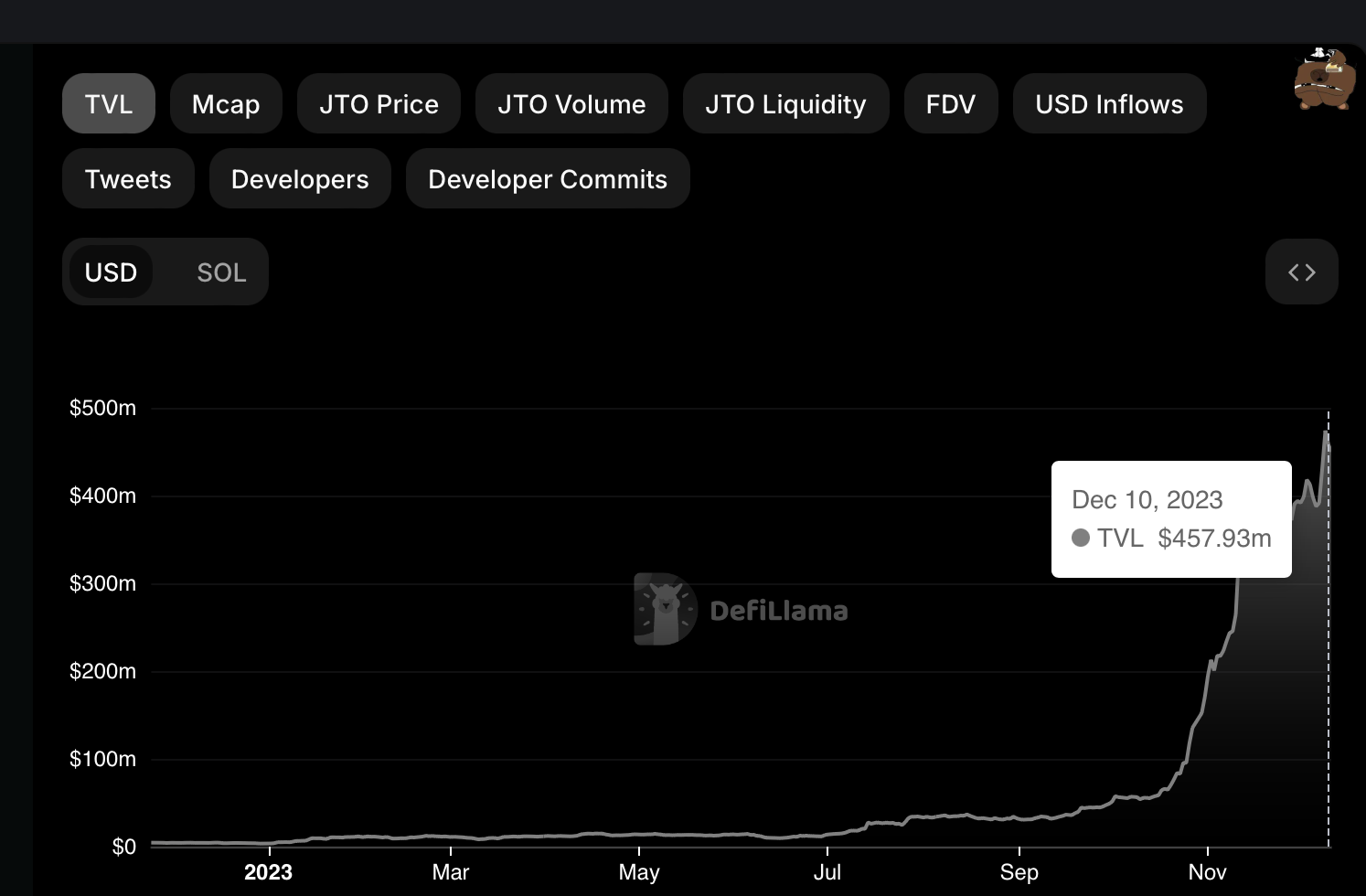Don’t invest unless you’re prepared to lose all the money you invest. This is a high-risk investment and you should not expect to be protected if something goes wrong. Take 2 mins to learn more >
Dzisiejsza cena Jito JTO Coin (JTO)
Dane rynkowe Jito JTO Coin (JTO)
Kapitalizacja rynkowa tokena w obiegu obliczana poprzez pomnożenie podaży obiegowej przez jego bieżącą cenę.
Wolumen obrotu tokenem w ciągu ostatnich 24 h. Im wyższy wolumen obrotu, tym bardziej popularny token.
Łączna liczba tokenów w obiegu. Jeśli podaż obiegowa jest niższa od maksymalnej podaży, oznacza to, że token jest obecnie inflacyjny lub nie został w pełni odblokowany. Jeśli podaż obiegowa odpowiada maksymalnej podaży, oznacza to, że token został w pełni odblokowany.
Maksymalna liczba tokenów, które zostaną utworzone. Jeśli token nie ma limitu maksymalnej podaży, oznacza to, że jego podaż jest nieograniczona.
Kapitalizacja rynkowa tokena, jeśli cała podaż tokenów jest w obiegu. W przypadku niektórych tokenów użycie FDV (w pełni rozwodnionej wyceny) może zapewnić dokładniejsze oszacowanie ich wartości, szczególnie w przypadku tokenów memowych.
Jest obliczana poprzez podzielenie wolumenu z 24 h przez kapitalizację rynkową. Wyższa wartość oznacza większą popularność i większą podatność na gwałtowne wahania cen.
Informacje o Jito JTO Coin (JTO)
The Largest LSD Project on Solana
In the analysis of "Solana Price," it is mentioned that the development of the ETH ecosystem is saturated, lacking new narratives. A significant influx of institutional funds into Bitcoin has led to a gradual stabilization of Bitcoin's price, with the wealth effect becoming less apparent. Investors holding Bitcoin earn far more profits from investing in the Bitcoin ecosystem than from holding Bitcoin long-term. This situation is very similar to the development of Ethereum itself.
The differences between Ethereum and Bitcoin are growing, so investors are more inclined to find other public chains that can compete with Ethereum and replicate its narrative. Currently, Solana seems to be the only project capable of competing with Ethereum, which is the main reason Solana's token has surged from $19 to the current $70. The rising price of public chains, in addition to gaining more investor attention, also leads to rapid development of top projects in various tracks of public chains. The price also has significant growth potential.
Jito is the leading LSD project on Solana. The key difference from other LSD projects on Ethereum is that, in addition to reinvesting borrowed tokens to earn rewards, Jito also offers MEV rewards. MEV is a common way to "profit" in the DEFI space, simply put, by identifying orders that consume a significant amount of Gas Fee and earning the price difference through intermediaries (usually MEV bots). The problem this causes is that orders with lower Gas Fees may take a long time to execute, or the Gas Fee of the order may be higher than the order itself. Users staking Solana tokens in Jito, in addition to staking rewards, can also receive MEV rewards.
Jito is also the largest staking service platform on Solana, similar to Lido. JTO's Total Value Locked (TVL) has skyrocketed by a whopping 10 times in the past two months.

Jito's governance token is JTO, officially launched on November 28, 2023, and listed on the BingX exchange on December 8. On the day of listing, the price started to surge and reached a peak of $4.1 on the 9th (100%).
Jito Founding Team and Investment Institutions
Jito has a strong investment background, with lead investments from Multicoin Capital and Framework Ventures, and participation from Ventures and Anatoly Yakovenko, co-founder of Solana Labs.